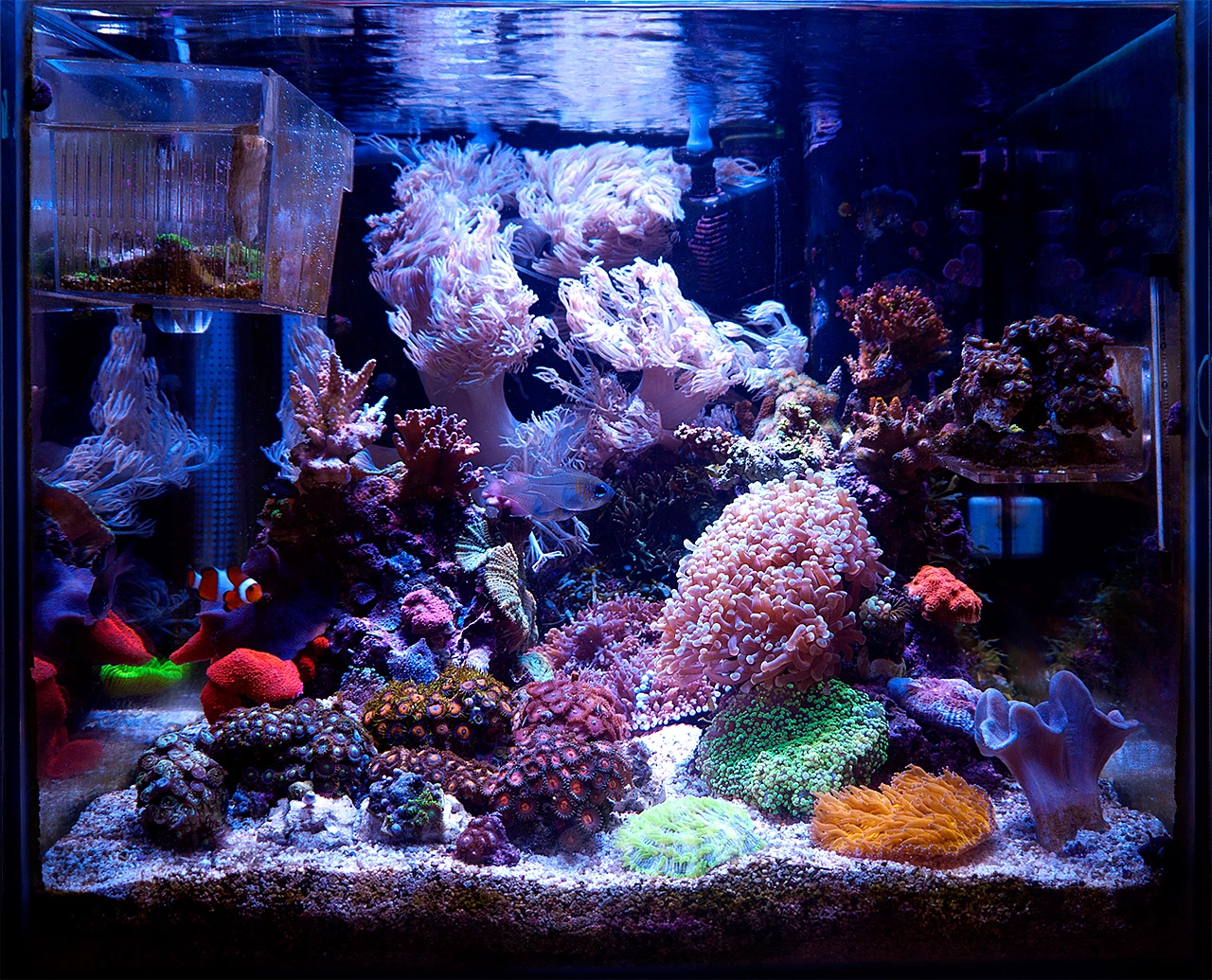Stunning 30-Gallon Reef Tank – RollaJase's TOTM | NanoReef

Tank Specifications
Volume: 30 Gallons / 110 Liters
Dimensions (L × W × H):
20.0" ×
20.0" ×
18.0"
50.0cm ×
50.0cm ×
45.0cm
Equipment List
- Salt: Red Sea
Frequently Asked Questions
What salinity levels should I maintain in my reef tank?
Maintain a salinity level between 1.025 and 1.026. It's important to use a refractometer for accurate measurements.
What temperature range is ideal for my reef aquarium?
Aim to keep your tank temperature between 25 to 27 degrees Celsius for optimal coral and fish health.
What pH range should I target for my reef tank?
Maintain a pH level between 7.8 and 8.2, as this provides a stable environment for your marine inhabitants.
How do I maintain appropriate alkalinity levels?
Aim for alkalinity levels around 7.6 dKH, and target 8.0 dKH if possible. Regular monitoring and consistent dosing with appropriate buffers can help stabilize this parameter.
What should my calcium levels be?
Maintain calcium levels between 400-420 ppm to support coral growth and health.
How do I ensure sufficient magnesium levels in my reef tank?
Keep magnesium levels between 1260 and 1300 ppm. Regular testing and dosing with a magnesium supplement will help achieve these levels.
What are the acceptable levels for ammonia, nitrite, and nitrate in my reef tank?
Ammonia and nitrite should always be at 0. For nitrate, levels around ~0.2 are acceptable to avoid stress on corals and fish.
Is there a specific target for phosphate levels?
While phosphate can vary, it’s recommended to monitor it regularly. Uncontrolled phosphates can lead to algae problems.
What is the recommended water change frequency for a reef tank?
Perform a 25% water change every fortnight to maintain water quality. Use a quality salt mix, such as RedSea Coral Pro Salt.
How often should I clean the protein skimmer?
Clean the skimmer cup at least once a week to maintain efficiency and prevent overflow.
What is the significance of regular glass cleaning in reef aquarium maintenance?
Cleaning the glass keeps the tank looking clear and allows for proper light penetration. Scrape the glass weekly or more frequently if needed.
How frequently should I change the GFO and carbon in my media reactors?
Change GFO and carbon monthly to ensure optimal filtration and prevent buildup of toxins.
What daily tasks are crucial for maintaining my nano reef tank?
Daily tasks include monitoring water parameters, performing top-offs for auto top-off systems, and feeding fish and corals as needed.
How can I manage detritus buildup in my reef tank?
Use a turkey baster to agitate the substrate and blow off rocks to prevent detritus from accumulating.
What feeding regimen do you recommend for fish in a reef tank?
Feed fish a varied diet including Ocean Nutrition Marine Mix one cube daily, and supplement with Marine 1-2mm pellets when you are around.
How can I ensure my corals receive proper nutrition?
Feed your corals using products like Salifert Coral Food, Microbe Lift Phyto-Plus, and Zoo-Plus every few days to enhance their growth and color.
What are the feeding methods for LPS and SPS corals?
For LPS corals, target feeding with frozen foods can be beneficial, while broadcasting liquid foods 2-3 times a week is effective for SPS.
How do I achieve a balanced coral environment in my reef tank?
Regularly monitor and adjust water parameters, maintain proper lighting, and ensure good water flow to create a suitable environment for both LPS and SPS corals.
What lighting setup is appropriate for maintaining a diverse coral collection?
An LED lighting system like the AI Sol is ideal, as it provides the necessary spectrum and intensity for coral growth while being energy efficient.
What should I consider when arranging corals in the tank?
Consider their light and flow requirements; place more light-demanding corals higher in the tank and those needing less light lower down. Also, ensure that larger corals don’t overshadow smaller ones.